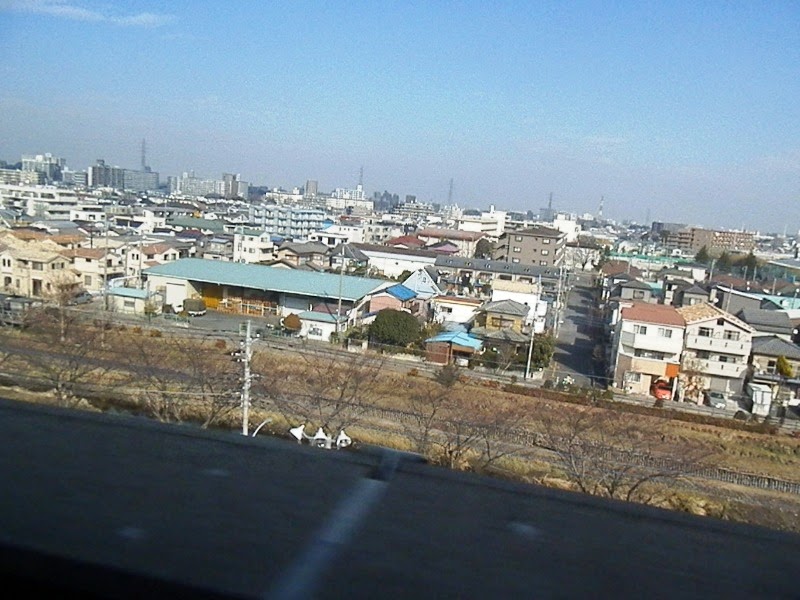Tokyo
Quantum Entanglement and Another Dimension
What is seen is a result of what cannot be seen.
There is a phenomenon called entanglement.
For example, if a pair of particles is generated in such a way that their total spin is known to be zero, and one particle is found to have clockwise spin on a certain axis, then the spin of the other particle, measured on the same axis, will be found to be counterclockwise. Because of the nature of quantum measurement, however, this behavior gives rise to effects that can appear paradoxical: any measurement of a property of a particle can be seen as acting on that particle (e.g. by collapsing a number of superimposed states); and in the case of entangled particles, such action must be on the entangled system as a whole. It thus appears that one particle of an entangled pair "knows" what measurement has been performed on the other, and with what outcome, even though there is no known means for such information to be communicated between the particles, which at the time of measurement may be separated by arbitrarily large distances.Such a phenomenon can be explained by assuming a new axis in coordinates of an elemental particle.
http://en.wikipedia.org/wiki/Quantum_entanglement
No matter how long the distance between a and b is, if the two particles P1 and P2 are entangled, they share the same value "c" indicating a quantum state.
If P1 is on the earth and P2 is on the moon, they are still entangled through the quantum-coordinate "c."
If "c" means a state of the spin, P1's having an upward spin means P2's having a downward spin.
But when the particle P2 receives observation using specific energy, its quantum state changes from "c" to "e," thus breaking an entanglement relationship. At the same time, the particle P1 changes its quantum state from "c" to "d."
So, no signal is sent from P2 to P1 at the speed higher than the light speed. But, the effect on the quantum coordinate works both on P1 and P2 at the same time despite a distance between them.
Therefore, when observation leads to a finding of a downward spin in P2, the spin of P1 becomes an upward at the moment of the observation.
You may regard "e" as a downward spin and "d" as an upward spin. Hence, you would regard the quantum state "c" as a mixed state of downward and upward.
Before observation,
P1 (a, d + e)
P2 (b, d + e)
After observation,
P1 (a, d)
P2 (b, e)
Note that the quantum coordinates d, e, and d + e must represent not only states but also force. The state "d" means force to realize an upward spin and "e" means force to realize a downward spin. The sate "d + e" means force to realize "d" or "e" at any moment according to probability.
In the case of the double slit experiment, the following coordinates can be used with the position coordinate and the waveform state coordinate.
When using Slit 1 only and thus P only passes Slit 1,
P (x, p1)
When using Slit 2 only and thus P only passes Slit 2,
P (x, p2)
When using Slits 1 and 2 and thus P passes either Slit 1 or Slit 2,
P (x, p1 + p2)
As this waveform state means how force from the space works on movement of the particle, P (x, p1 + p2) means the position x of the particle P is influenced by interference force caused by p1 and p2. It shows the interference pattern. And specific values of x are taken according to probability associated with wave-formed p1, p2, or p1 + p2.
But if the particle P is observed using some energy at Slit 1 or 2, its quantum state changes to P (x, p1) or P (x, p2). In this case no interference pattern appears on the screen ahead the Slits.
The point at issue is that we have to introduce additional coordinates in handling elemental particles in addition to the position coordinates.
And this quantum coordinate or axis suggests there is another dimension in space or another layer in space of this universe where entangled elemental particles are linked no matter how long they are separated in position coordinates.
We have to admit such a dimension that cannot be seen, but rather, its existence is proved and revealed by the quantum entanglement.
*** *** *** ***
Eph 5:30 For we are members of his body, of his flesh, and of his bones.
Eph 5:31 For this cause shall a man leave his father and mother, and shall be joined unto his wife, and they two shall be one flesh.
Eph 5:32 This is a great mystery: but I speak concerning Christ and the church.



















